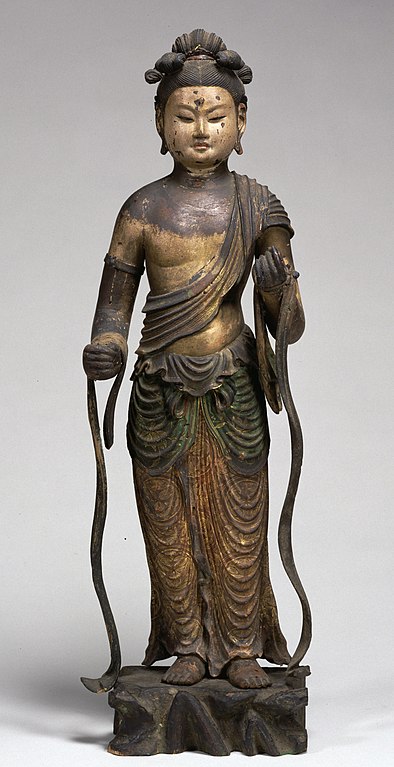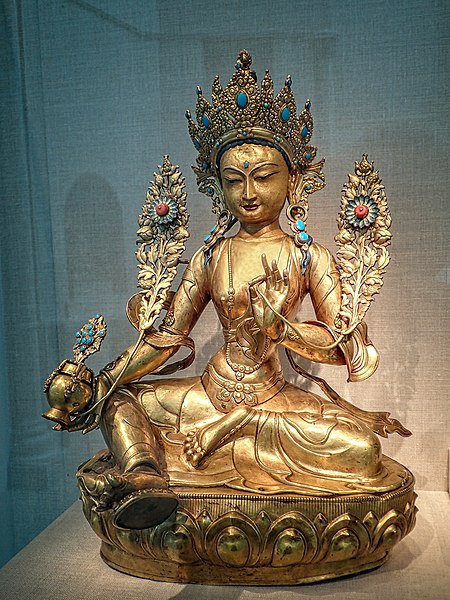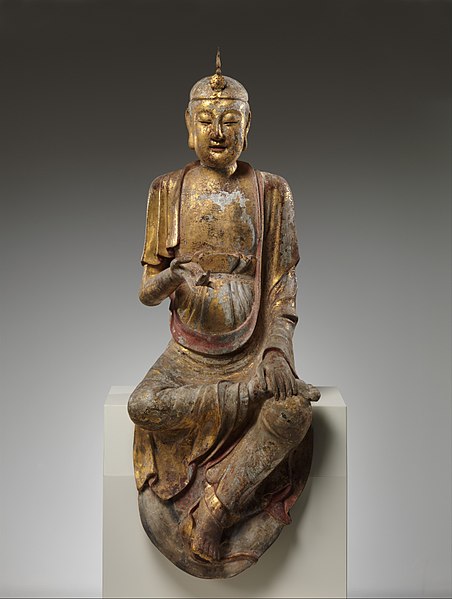
Thammasat University students interested in art, comparative religion, Buddhism, Asian history, and related subjects may find it interesting to participate in a free online zoom lecture series on Buddhist art.
The event is organized by the University of Hong Kong (HKU) Centre of Buddhist Studies.
The TU Library collection includes many books about different aspects of Buddhist art.
The speaker will be Professor Tianshu Zhu of the Faculty of Arts and Humanities, the University of Macau.
The first lecture, Placing the Cosmos Worlds inside a Buddha’s Body—The Iconographies of Dharmadhatu 法界 Buddha Images will start on Friday, 8 July at 5:30pm Bangkok time.
The second lecture, Placing Gods in the Iconographic Program of Buddhist Temples—a Comparison Study of Early India Buddhist Sites and Chinese Temple Design, will start on Friday, 15 July at 5:30pm Bangkok time.
Students are cordially invited to register at this link to participate:
https://hkuems1.hku.hk/hkuems/ec_regform.aspx?guest=Y&UEID=81923
For further information or with any questions, please write to the following email address:
hkucbs@hku.hk

The abstract for the first lecture reads:
One of the most fascinating and complex iconographies of Buddha images in China is a type of images depicting Buddhist cosmological structures and various type of beings on the Buddha’s body. This is the so called “cosmological Buddha,” in Sanskrit the dharmadhātu (Dharma-realm) Buddha image, or “fajie da xiang” 法界大像 (“a large image of the dharmadhātu”) by the Chinese inscription. In central China, such iconography thrived after the middle of the sixth century and did not fade away until the Liao (907-1125) and Song (960-1127) Dynasties around the twelfth century. From my incomprehensive survey, over fifty images of such representations in the east part of Central Asia and central China survived to the present day. Which Buddha is this dharmadhātu Buddha? It has be a hot debate for decades on this iconography. Most scholars in the past identified it either as a representation of Vairocana or Śākyamuni Buddha. Whether Vairocana or Śākyamuni, ultimately we need to explain why the cosmos worlds were placed inside a Buddha’s body. In this talk, I will tour you through those fantastic representations of the dharmadhātu Buddha with clear typology analysis, untangle the controversy among scholars, and reveal the true meaning of this iconography. Actually, this iconography was developed in strong association with the Tathāgatagarbha (womb of the Tathāgata, 如來藏) thought, which is fundamental to the Mahayana doctrine.
The abstract for the second lecture follows:
Depictions of various gods are essential in the iconographic plan of Buddhist temples in both India and China. Which deity was chosen and where to place the image of this deity in a temple, ultimately, is about how the Buddhists perceive the nature and function of the deity. For example, why did the Chinese set up the earth god shrine and image of Guan Yu in Chinese Buddhist temples? Would you be surprised if I tell you that they did not violate the original Buddhist tradition? This talk for the first time discuss systematically the placement of images of gods in Buddhist temples. This issue also reveals the intricate relationships between Buddhism and non-Buddhist religions.
As TU students of Buddhism know, Dharmadhatu is the ‘dimension’, ‘realm’ or ‘sphere’ of the Dharma or Absolute Reality. In Mahayana Buddhism, dharmadhātu means “realm of phenomena”, “realm of truth”, and of the noumenon. It is referred to by several analogous terms from Mahayana Buddhist philosophy, such as Tathata (Reality “as-it-is”), emptiness, dependent co-arising and eternal Buddha. It is the “deepest nature, or essence”.
Dharmadhātu is the purified mind in its natural state, free of obscurations. It is the essence-quality or nature of mind, the fundamental ground of consciousness of the trikaya, which is accessed via the mindstream.
When the buddha-nature has been realised, dharmadhātu is also referred to as the Dharmakāya, the Body of Dharma Truth.

Professor Georgios T. Halkias, Director of the HKU Centre of Buddhist Studies, wrote a message posted online:
Buddhism is a growing force in the world. In recent years there has been a tremendous upsurge of interest in the religion, particularly in America and Europe. We have also seen a worldwide increase in academic interest in the relationship between science and Buddhist teachings.
As a consequence of this development, interest in and study of Buddhism is no longer restricted to believers and religious academics but has attracted wider participation by people in many other fields and religious backgrounds. This has in turn produced an even richer pool of talent and knowledge that will enrich serious Buddhist studies.
In line with this trend, the Centre of Buddhist Studies of The University of Hong Kong was established in September 2000 to promote the study of and research into all aspects of Buddhism and its relevance to the world of today. The Centre is a self-funded academic centre relying on generous donations and support from benefactors. It is the first of its kind to be set up in Hong Kong.
Since 2002, the Centre has been offering a broad range of Buddhist studies at postgraduate research (MPhil/PhD), Master and undergraduate levels. The degrees are awarded through the Faculty of Arts. Our courses covering social application, Indian Buddhism, Chinese Mahayana, Buddhist Canonical languages and others are taught by a team of renowned Buddhist scholars from around the world.
We believe our programmes of studies offer a new dimension on the study of Buddhism. The traditional approach of study was based on learning religious texts and commentaries and was largely conducted in monasteries and specialised institutes. Our programmes go far beyond this by offering new perspectives on many other areas not traditionally associated with the study of the religion. The programmes will offer students the opportunity to study Buddhism not only as a religion but also as a philosophy, an ethics system and in metaphysical terms. They will also be of interest to those who wish to learn more about the international academic research being carried out into the relationship between science and Buddhism.
Through a fundamental understanding of Buddhist teachings, the programmes will enable students to develop better mind and life-management skills. In particular, our Master of Buddhist Studies Programme (MBS) and postgraduate research programme leading to the award of MPhil and PhD degrees provide participants with the opportunity to explore how Buddhist teachings may add a new dimension to the science of the human psyche and how their application may enhance effectiveness in their personal and professional lives.
We believe that Hong Kong uniquely combines an Eastern culture and tradition with all the dynamism of an ultra-modern and cosmopolitan society and therefore provides the perfect setting for an academic centre that offers Buddhist studies set firmly in an international context.

(All images courtesy of Wikimedia Commons)
